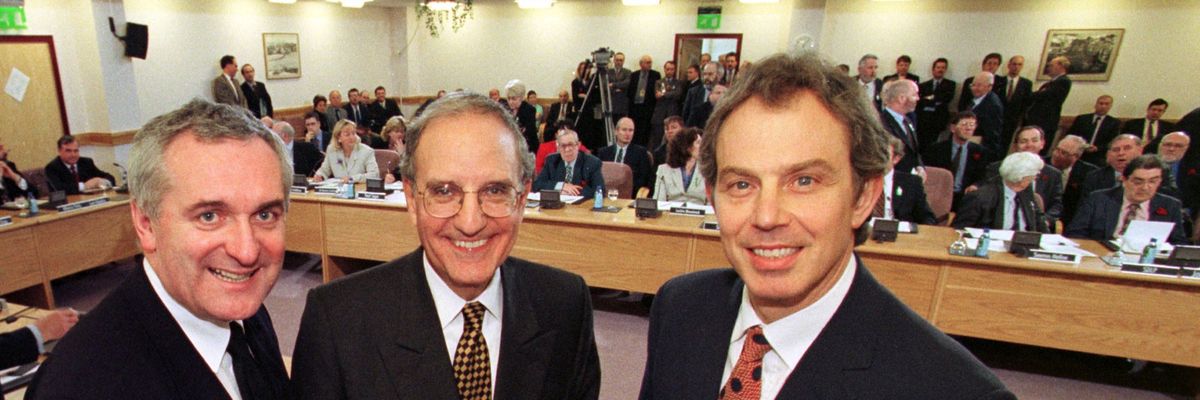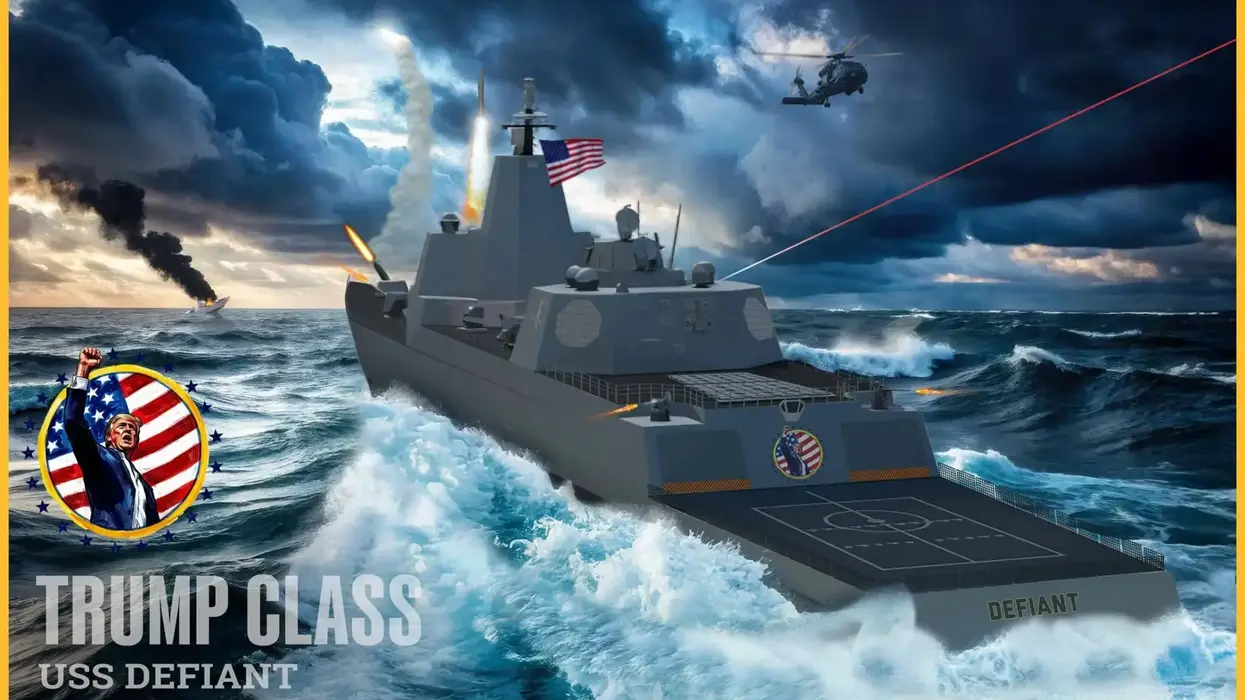The failure of the recent Ukraine offensive to secure major gains reinforces the impression that the choice in Ukraine is between catastrophic escalation, a long-deadlocked war, or a negotiated accommodation. What lessons might the Northern Ireland peace process have for the negotiation of an end to the Ukraine war?
In March 2022, led by Turkey, the Russians and Ukrainians appeared to be close to a political agreement — the Istanbul Plan — that ultimately collapsed, reportedly due in part to then-UK Prime Minister Boris Johnson’s opposition.
Similarly, in 1996 Boris Johnson, then a Daily Telegraph journalist, rejected the Northern Ireland peace process and argued for a tough security approach to defeat the IRA. He underestimated the possibilities of politics and negotiations. Just two years later the Belfast/Good Friday Agreement (B/GFA) was approved on April 10, 1998.
The Northern Ireland peace process is widely perceived as a successful model for ending intensely violent conflict. By the early 1990s, the conflict appeared to be insoluble, with growing violence and increasing political division. Even immediately prior to the final week of negotiations opinion polls and voting behavior suggested further polarization rather than reconciliation.
Yet within four years of the IRA’s 1994 ceasefire, and after the IRA returned to war in 1996, the landmark GFA had been endorsed in a referendum. In 2006, Ian Paisley’s DUP and Sinn Féin, the political wing of the IRA, delivered an even more improbable agreement to restore powersharing and consolidate the peace process.
Five lessons can be learned from Northern Ireland for ending the Ukraine war. These highlight the importance of politics and diplomacy in delivering accommodation. First, knowing when to negotiate. Hardliners tend to believe their own fundamentalist propaganda, that war will bring victory.
The Sunningdale Agreement (1973) was very similar to the power sharing Belfast/Good Friday Agreement (1998). In 1973, however, the IRA believed it would inevitably defeat British imperialism, while unionists thought the deal betrayed the Union. It took 25 years, a further 2,500 deaths and tens of thousands injured for the parties to agree to a comparable deal. Scathingly, moderate nationalist MP Seamus Mallon called the Belfast Agreement “Sunningdale for Slow Learners.”
Arguably, the dominance of hardliners has meant that opportunities for ending the Ukraine war, such as the Istanbul Plan, were not properly explored. There is a possibility, depending on the (unpredictable) course of the war, that Ukrainians could end up with an even worse deal than was on offer in Minsk II (2015) and the Istanbul Plan (2022).
The second lesson is everyone must win. In Northern Ireland pragmatic peacemakers dispensed with the language of victory and defeat. Pro-peace process actors were given an honorable way out of violence. Secretary of State for Northern Ireland, Mo Mowlam rejected the provocative language of winners and losers. The B/GFA was designed to be open to contradictory interpretations. Republicans claimed the agreement severely weakened the Union, while unionists claimed the Union had been secured.
The Istanbul Plan and other subsequent proposals should be designed to be presented as a win to Ukrainians and Russians (as well as external audiences). Both Presidents Putin and Zelensky must be able to sell any deal to key domestic and international audiences as a victory.
Early in the war, a Russian source acknowledged that, “every side needs a win.” President Putin needed to be able to stop Ukraine joining NATO and hosting foreign bases and missiles.
Third, there are often unappreciated possibilities in politics. By the 1990s, the conflict appeared to be escalating. Potentially hopeful developments were upstaged by the propaganda war and the horror and tragedy of violent conflict. Behind the scenes, or secretly, there were talks which choreographed moves towards a peace process.
Politics is a negotiating situation. So, hardline rhetoric on the front stage of politics may conceal a willingness to compromise. Sinn Féin campaigned on the slogan ‘No Return to Stormont,” the local parliament, but just a few weeks later endorsed the B/GFA which led to a return to Stormont. Unionist leader David Trimble declared ‘No Guns, No Government” in June 1998 but then sat in government with Sinn Féin without IRA decommissioning in December 1999.
There have been apparently successful negotiations during the Ukraine war which give some hope that peace negotiations could work. Humanitarian corridors have been arranged, there has been some cooperation over nuclear security, as well as prisoner exchanges and the future of Ukrainian children in Russia. The Russians had negotiated a grain and fertilizer deal with the Ukrainians which allowed 33 million tons of grain to reach world markets, although this recently ended.
The fourth lesson is that cooperation and conflict can go side by side. British governments and the IRA did not have to like or necessarily trust one another to end the war. Both could cooperate to achieve the mutual goal of a sustainable peace. While secret talks were developing behind the scenes, the IRA bombed Downing Street (1991), launched devastating attacks on the City of London (1992, 1993) and bombed Warrington (1993) killing two children. Then-Conservative Prime Minister John Major explained that the IRA had a “perverted logic,” adding that “an offer of peace needed to be accompanied by violence, to show their volunteers that they were not surrendering.”
Behind the scenes negotiations continued. Speeches were exchanged to avoid public statements that would unnecessarily antagonize rival actors, and so that scripts and moves could be choreographed. British representatives gave the IRA media advice and republican and unionist leaders made concessions to support “enemy” actors with their key audiences.
Pursuing peace is a risk. The British government was uncertain as to whether the IRA leadership was committed to non-violent politics, or whether it would exploit the political and electoral benefits of the peace process and then return to war. Republicans could not be sure whether the British government and its “securocrats” would seek victory rather than compromise through the peace process.
If the B/GFA was improbable, then the St. Andrew’s Agreement (2006) was even more implausible, an agreement between implacable enemies, the fundamentalist DUP and Sinn Féin.
Finally, the Good Friday Agreement was choreographed. Negotiations were timed to culminate on Easter weekend, with religious symbolism attached to any redemptive deal. The two governments attempted to semi-script the final week of negotiations to maximize support for agreement. A “crisis” was created leading to a drama in which key actors supporting the peace process were given wins, with toxic issues (such as Crimea in the Ukrainian context) being deferred to future negotiations.
Arguably, the manipulations and deceptions used to end “the Troubles” in Northern Ireland were “honorable” and have saved many lives. Such political skills suggest that even when wars appear to be escalating, behind the scenes there may be possibilities for negotiations and accommodation. But this entails winding down the real and propaganda war, as well as messy and agonizing compromises on all sides. But there is considerable moral virtue in ending violence, avoiding the risk of further escalation and a more unjust accommodation.
















